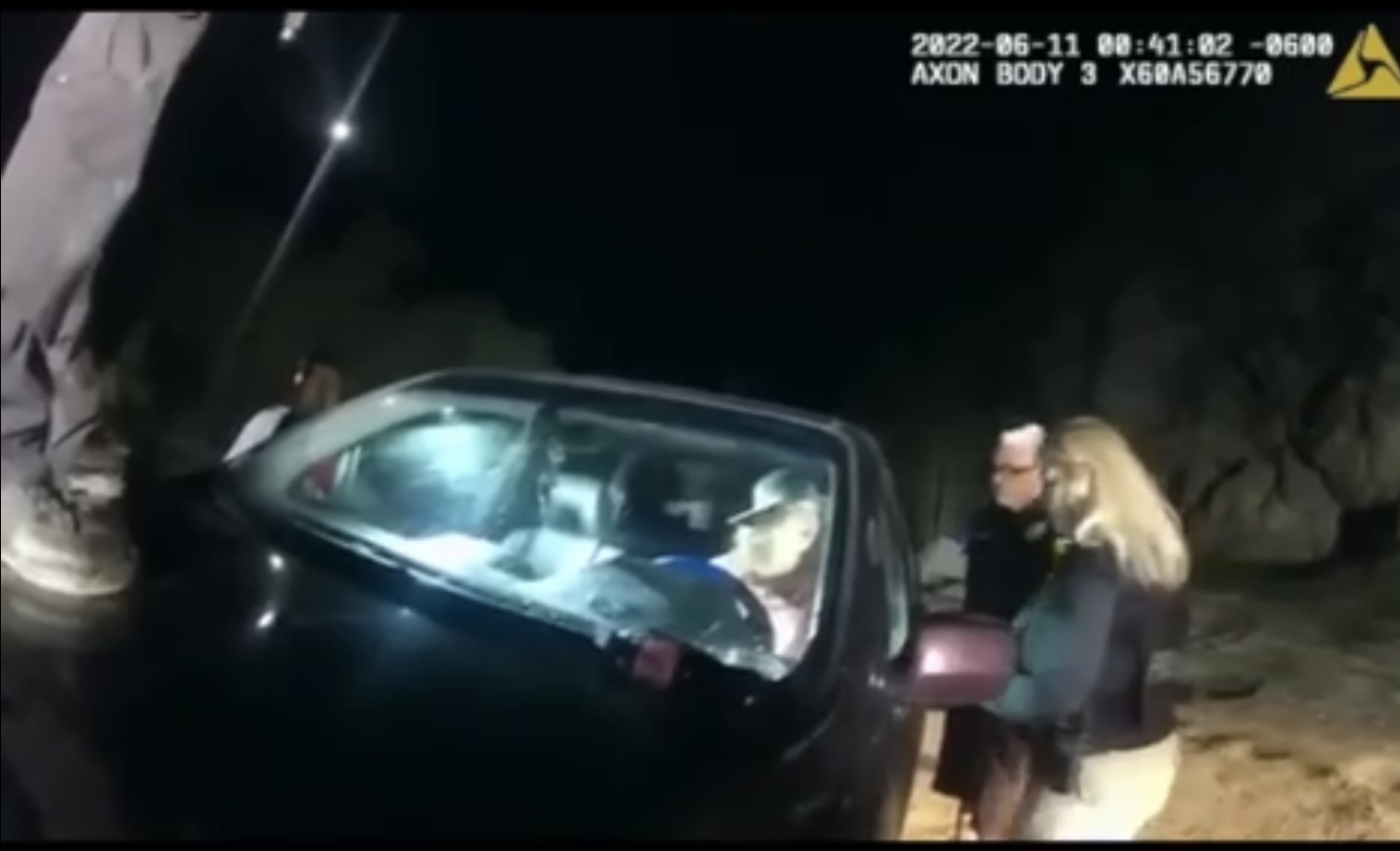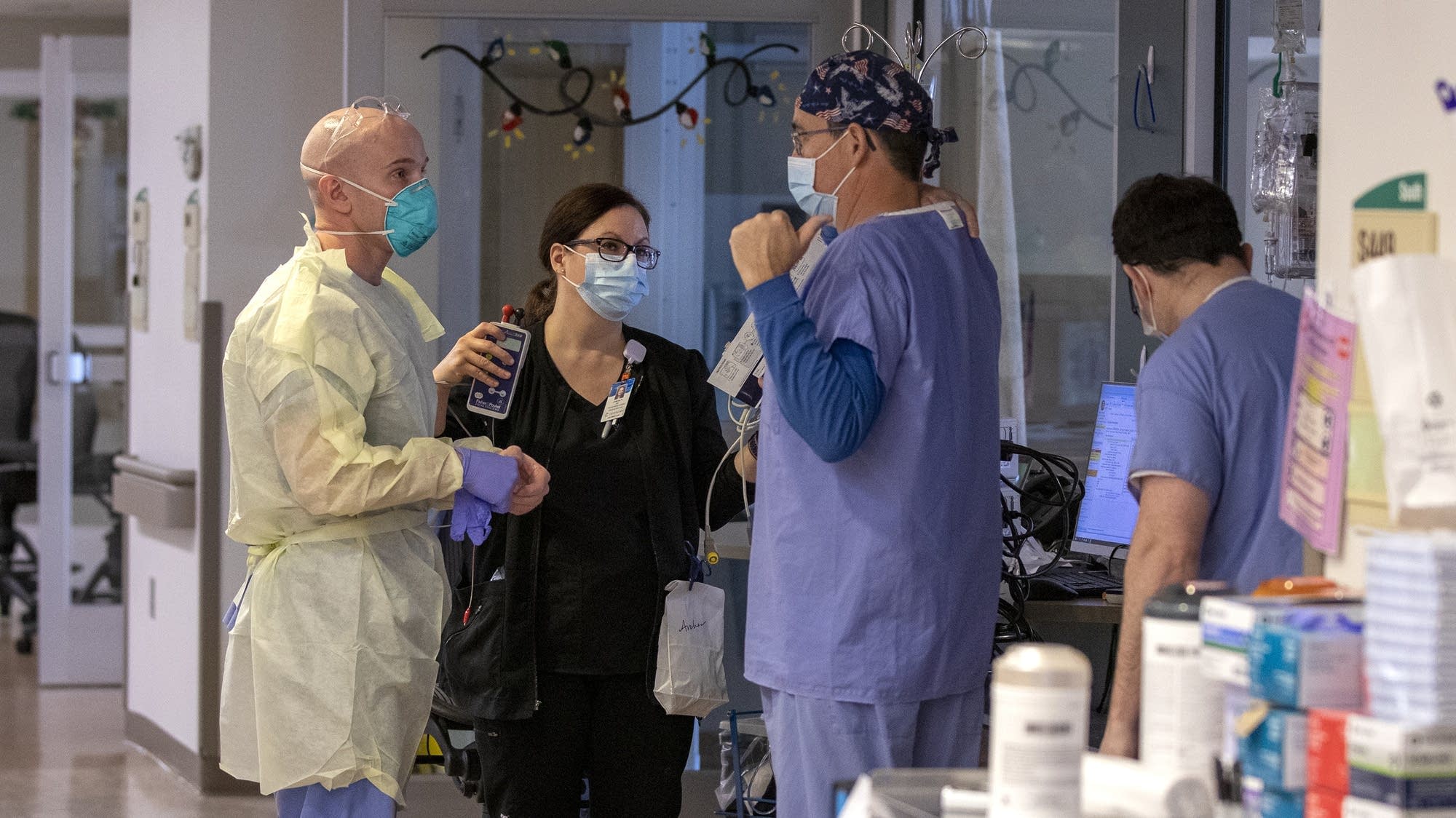[ad_1]
More than half of Colorado counties lack a “co-responder” program in which a mental health professional joins law enforcement on police calls, including Clear Creek County where local officers shot and killed a 22-year-old man as he sat in his car.
The death of Christian Glass in the small mountain town of Silver Plume, about 45 miles west of Denver, is once again raising questions about law enforcement response to 911 calls involving someone who is having a mental health crisis. Glass’ parents and their attorney revealed details of the man’s June 11 death last week.
The Clear Creek County Sheriff’s office said Glass became “argumentative and uncooperative” and tried to stab an officer. But video from the arrest shows that Glass, who made a heart with his hands toward the officers and said he was terrified, never even got out of his vehicle. The officers busted out the window, shot him six times with bean bag rounds, multiple times with a Taser and then shot him five times, according to the family’s attorney.
Co-responder programs are meant to de-escalate encounters with police and reduce the number of people who need mental health treatment but are instead sent to jail. Colorado has ramped up efforts in the past few years and provided state funding to local law enforcement agencies and mental health centers to expand programs across the state. Yet wide swaths of rural and mountain communities still do not have co-responder teams.
Since 2017, the state Behavioral Health Administration has offered funding to communities to start the programs, which also require local financial contributions. Today, 24 out of the state’s 64 counties have a co-responder program funded through the administration.
None have been added to the state program in the past year. The Alamosa Police Department, however, hired a co-responder last month and the Steamboat Springs Police Department now coordinates with the local community mental health center.
The Behavioral Health Administration program, with a $7.3 million budget, is funded through taxes on marijuana sales as well as federal mental health aid. State laws passed in 2017 and 2019 provided dedicated state funding for the program.
Co-responder teams funded by the Behavioral Health Administration responded to 25,900 calls from July 2020 to June 2021, and 98% of the time, there was no arrest, according to state data. And 86% of the time, the mental health professional who responded to the call ended up providing help, often with a behavioral health assessment or a link to treatment.
Most of the calls are resolved on site, though some result in transport to a hospital or mental health center. The model helps police respond more effectively to behavioral health calls, “which are often time-consuming, difficult to resolve, and, on relatively rare occasions, result in tragic injuries or deaths,” said Stefany Busch, spokeswoman for the Behavioral Health Administration.
Glass called 911 after he drove off a dirt road and said his car was stuck. Officers who responded, lights flashing in the dark, asked him repeatedly to get out of the car. “You don’t need to be terrified,” one says, an exchange captured on body camera footage. “We’re out here to try and help you and have a conversation.”
Over the radio, Colorado State Patrol asks what the deputies’ plan is, before saying that if Glass is not suicidal, homicidal or posing danger there is no reason to contact him. “My sergeant says there’s no point contacting him if he’s not a harm to himself or anyone else, then no crime,” an officer says.
But the interaction escalated as Glass refused to get out of the car or roll down the window. Officers threatened to break the window and Glass, who had a knife, threatened to kill them if they didn’t leave him alone. One officer got on the hood of the vehicle, pointing a gun and bright light at Glass. After about an hour, officers broke the window and Glass grabbed a knife. Officers shot him with bean bags and a stun gun, and Glass screamed as he was being pelted and hit with a Taser.

The video shows Glass, still in the driver’s seat, thrusting a knife toward an officer. He’s shot five times, and Glass stabbed himself before he died.
Officers were trained in mental health response
Although Clear Creek has no co-responder program, both sheriff’s deputies who responded to Glass’ 911 call were trained to identify signs of mental health distress, Undersheriff Bruce Snelling said. The annual training is required for all of its deputies, along with peer support training that includes recognizing signs of medical and mental distress.
Upon being hired, every deputy is required to take a two-hour training on de-escalation and must repeat the course every two years, according to the Clear Creek County Sheriff’s Office policies and procedures manual.
“Law enforcement is heaped upon to solve a lot of problems, whether it be drug abuse, alcoholism, mental health issues, domestic violence. People expect that we’re capable and well-trained to handle each and every one of those things that might pop up,” Snelling said. “So we’re always looking to try to expand what our knowledge and training capabilities are and we work hard at that each and every day.”
But the sheriff’s office is not currently looking at specific ways to improve the department’s mental health training, he said, and a low number of mental health calls the sheriff’s office receives wouldn’t justify implementing a co-responder model.
“We’re a small place, you know. It’s not like we run into a mental health issue every day. We can, but sometimes you might not run into it for a couple of weeks,” Snelling said.
“I think if we had a greater call volume of mental health issues, we might be able to justify having a co-responder program.”
Snelling declined to comment specifically on the shooting, citing the ongoing investigation.
The Colorado Bureau of Investigation is reviewing the case, alongside the Fifth Judicial District that includes Clear Creek County, District Attorney Heidi McCollum said last week. Her office plans to release a report on the shooting or present the case to a grand jury, which would decide if the deputies violated the law, McCollum said.
Jurors in previous Clear Creek case wanted mental health resources
Glass’ death isn’t the first time Clear Creek deputies have come under scrutiny for shooting a person having a mental health crisis.
In June 2020, a grand jury was convened by then District Attorney Bruce Brown, McCollum’s predecessor, to review the actions of two Clear Creek County sheriff’s deputies after they shot and killed an Idaho Springs man experiencing what appeared to be a mental health episode. Darrin Patterson, 57, was well-known to local police for his frequent, paranoid 911 calls.
After a high-speed chase, during which Patterson lit a gasoline-doused blanket in his backseat on fire, Patterson held a gun to his head while inside his car before pointing it toward one of the deputies, according to a grand jury report. A deputy shot Patterson fearing for the other deputy’s life.
Grand jurors did not find that either deputy violated the law, but said they were “troubled” by the repeated responses by the Idaho Springs Police Department before Patterson’s death and “their failure to take any affirmative steps to facilitate assistance to Darrin Patterson, a person obviously experiencing profound mental illness.”
In the year before he died, Patterson had several encounters with the Idaho Springs police, many of them initiated by him, when he explained to officers his paranoid delusions of people spying on him, voices that he heard and his belief that people were following him. He was never aggressive or showed violent tendencies, according to a grand jury report. Hours before his encounter with Clear Creek County deputies on the night of his death, Patterson called Idaho Springs police saying he was afraid people were following him and that he felt unsafe.
The jurors recommended that more mental health resources be made available across Clear Creek County and that its municipalities contribute more funding to address mental health issues. They encouraged the local governments within the county to identify mental health resources “that do not currently exist” for law enforcement officers to help those in mental health crisis “in hopes of preventing another tragedy like this from occurring,” the report said.
The county’s lack of resources contributed to Patterson’s death, former Fifth Judicial District Attorney Bruce Brown, who convened the grand jury, said in a statement after the 2020 grand jury report was released. “And the question is whether officials can work together, step up and fill a glaring need to provide treatment to people who are suffering,” he wrote.
It’s not clear if the deputies called a mental health professional during their interaction with Glass, but the lack of mental health resources in Clear Creek County is not new, nor is it unique, Brown said.
“This is just a county with very few counselors and no psychiatrists,” Brown told The Colorado Sun on Friday. “There is a mental health crisis across this country and without the public saying we are going to continue to make sure that these communities, particularly rural communities, are served, these gaps are going to show up as unfortunate incidents where people die.”
While funding can create obstacles for smaller communities in creating co-responder models, money is not a “conclusive barrier,” he said, pointing to the small counties of Powers, Otero and Fremont.
It also comes down to law enforcement agencies making a co-responder model a priority. For Clear Creek County, that includes the sheriff’s office and the police departments for Georgetown, Idaho Springs and Empire.
“It’s for the leadership at those agencies, in conjunction in part with their mayors, to say we want this to happen,” Brown said.
Clear Creek, Gilpin counties considered mental health partnership
During a July 2021 Board of County Commissioners meeting, Clear Creek County Sheriff Rick Albers said he took the grand jury’s recommendation seriously and was making steps to bolster access to mental health resources with Jefferson Center for Mental Health.
“These are all baby steps leading up to the big step of getting a co-response team over here,” Albers said during the meeting. “I think we have a better chance of getting a partnership with us and Gilpin rather than each county doing it themselves. I don’t see how we can afford it alone and I don’t see how Gilpin can afford it alone.”
In addition to a joint co-responder program, Gilpin County Sheriff Kevin Armstrong, who also attended the virtual meeting, suggested both counties partner to get deputies 40 hours of crisis intervention training, which aims to reduce the risk of serious injury or death during emergency situations between police and those struggling with mental health issues.

Clear Creek and Gilpin County commissioners reached out to other counties with co-responder models, including Boulder, Summit and Larimer counties, to learn about their best practices and how they fund their programs.
“We know that mental health response is most helpful when it happens right then, when you need it,” Commissioner Randy Wheelock said during the meeting. “I think for our two communities, Gilpin and Clear Creek, that involves having somebody assigned and dedicated to this locale and not having to involve a multiple-lane communication through somebody that’s coming from somewhere else to try to get here when we need it right now. For both law enforcement’s sake, the people making the call and for the person who needs that help.”
In a statement Friday, Clear Creek County commissioners called Glass’ death “heartbreaking,” and said the “circumstances surrounding his death are deeply troubling.”
Data released last year showed that state-funded co-responder teams have reduced the number of people placed on involuntary mental health holds, meaning those held in a hospital or jail because of threats of suicide or homicide. Involuntary holds dropped to 3.2% of calls in September 2020, compared to 8.3% a year earlier.
The teams also gave police more time to focus on crime, the state said. Law officers responded to fewer unnecessary calls — one out of every three calls they had responded to before their departments had co-responder programs. Police and sheriffs departments reported increasing patrol duties to 38% from 26%.
Some of the 24 counties have more than one program, typically at the police and sheriff’s departments. More than 70 law enforcement agencies statewide have state-funded co-responder teams, covering about 80 communities.
The 24 counties with at least one program funded by the Behavioral Health Administration are Adams, Arapahoe, Baca, Boulder, Broomfield, Chaffee, Crowley, Delta, Denver, Douglas, Eagle, El Paso, Fremont, Jefferson, Lake, Larimer, Mesa, Montrose, Otero, Pitkin, Prowers, Pueblo, Summit and Weld.
Eleven communities in the state have mental health response programs that are not funded through the administration.
A law passed by the legislature this year created additional grant programs through the state Department of Public Safety for law enforcement agencies that want to start crisis response programs.
[ad_2]
Source link







